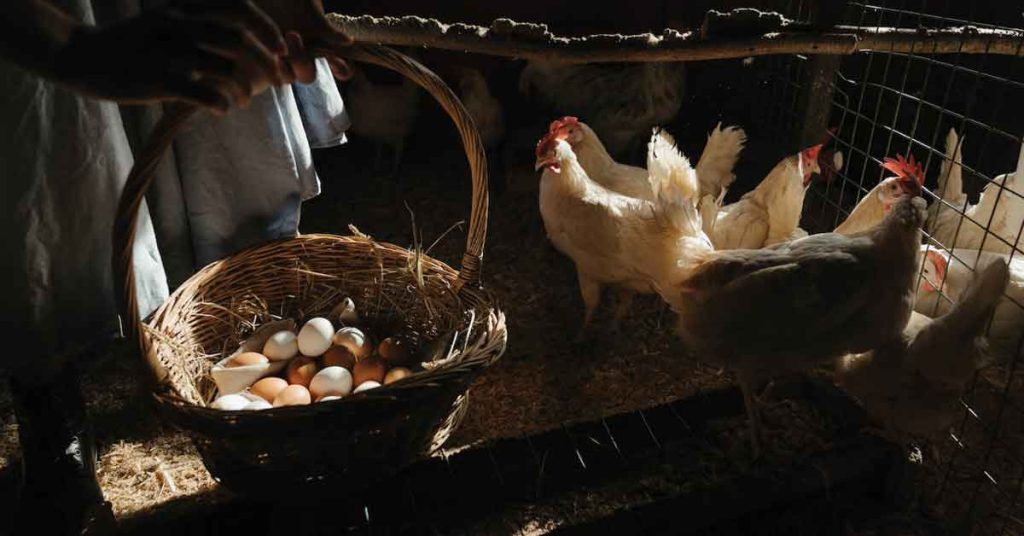Introduction
In this article, we will discuss 7 important chicken coop design tips for your homestead with examples and the importance of a good chicken coop design.
Knowing the Importance of a Good Chicken Coop Design
Your chicken coop design is one of the most important factors to consider if you’re getting into backyard poultry. A well-designed chicken coop is more than just a place for your chickens to live; it greatly impacts their well-being, security, and production. It serves as a haven for your chickens, where they may rest, feed, lay eggs, and seek protection from the elements and wild animals. It is essential to create it carefully, considering your chickens’ requirements and routines.
Overview of the Article Content
We’ll explore the complex world of chicken coop designs and chicken coop designs tips in this article. We’ll go through important topics, including comprehending your chickens’ needs, deciding where to put the coop, planning for comfort and safety, and much more. By the time you’re finished reading, you’ll know more about creating a coop that your chickens will enjoy, assuring their happiness and productivity. These pointers and insights will be helpful whether you’re new to keeping chickens in your backyard or a seasoned chicken keeper wishing to upgrade your present arrangement. Let’s start this amazing journey to build the coop our feathered friends deserve!
Tip 1: Knowing What Your Chickens Need
Understanding your chickens’ needs is the first and most crucial tip/step in creating a good chicken coop. Like any creature, chickens have certain needs to be healthy and happy. When these requirements are met, chickens thrive, producing more eggs and maintaining better health, which is also good for you.
Space Requirements for Chickens
Designing a chicken coop requires careful consideration of available space. Chickens require space to move around, spread their wings, peck, and engage in other natural behaviors. Each chicken should, on average, have between 2 and 3 square feet of room within the coop and between 8 and 10 square feet outside in the run. However, the greater room is always desirable because crowded quarters can cause flock stress, illness, and pecking problems.
You should be aware that the space needs may change depending on the breed and size of the chickens. Compared to smaller or more docile breeds, larger and more active breeds will require more area.
Health and Safety of Chickens
Designing a safe and secure coop requires understanding the needs of chickens. These are the main factors to think about:
- Predator Protection: Your chicken coop should be constructed to keep out predators. To do this, the coop must be protected on all sides, including the top and bottom. Utilize robust materials and predator-resistant latches. Additionally, remember that predators might be any size, including hawks, snakes, raccoons, and foxes.
- Ventilation: Chickens produce a lot of ammonia and moisture, which can accumulate in a coop with inadequate ventilation and cause respiratory problems. Make sure the ventilation in your coop design is adequate while preventing drafts.
- Roosting Area: Chickens snooze on roosts, which are perches. Ensure adequate room for all your chickens to roost without being crowded.
- Nest Boxes: You’ll need at least one nest box for every four to five chickens. These give chickens a peaceful, cozy location to lay their eggs.
- Easy Access to Food and Water: Chickens must quickly access food and clean water. Think about the feeders and waterers you’ll include in your coop design.
- Light: For chickens to lay eggs, it must be lit. Ensure that your chicken coop has access to sunlight.
You can make sure your coop design is off to a fantastic start by being aware of the space requirements of your chickens and the crucial components they need for their health and safety.
Tip 2: Selecting the Right Location
Selecting the ideal site on your property is another important chicken coop design tip for designing a successful chicken coop. The placement of their coop can greatly impact the comfort, health, and production of your chickens. When determining where to put your coop, there are several things to take into account.
Placement Considerations for the Coop
The location of your coop is important for both the well-being of your chickens and your convenience in using it.
- Accessibility: Ensure feeding, cleaning, and egg collection are simple tasks in the coop. You don’t want it to be too far from your home because you’ll visit it at least once or twice a day.
- Drainage: Pick a place with good natural drainage to keep the coop from getting soggy and muddy. The best position would be slightly raised.
- Noise and Odor: Chickens can make noise, and their coops occasionally smell, particularly if they aren’t cleaned frequently. So, keep your neighbors and family’s comfort in mind.
Chickens are fantastic garden aids because they consume pests, and their droppings provide good fertilizer. They can, however, also kill plants. If your yard is landscaped or has a garden, consider this factor.
Location-Related Factors like Wind, Sunlight, Etc.
- Sunlight: For optimal health and egg production, chickens require sunlight. Pick a spot where the coop will receive lots of natural light and has access to covered places so the birds may escape the hot heat during the day.
- Wind and Weather: Consider the typical wind direction in your area. To avoid drafts, the coop should be placed such that the windows and vents are not exposed to the direction of the strongest winds. Also, consider how your preferred site will perform over the year’s various weather patterns.
- Predator Access: When deciding where to put your coop, consider potential predator access points. Place the coop far enough away from any shrubs, fences, or trees that could serve as a jumping-off point for predators.
In conclusion, picking the ideal place for your chicken coop requires careful consideration of various criteria, including your property’s terrain and climate. Remember that a strategically placed coop can considerably improve your flock’s general health and happiness, producing an abundance of fresh eggs!
Tip 3: Designing for Safety and Comfort
Building a chicken coop that gives your flock comfort and protection is one of the most crucial chicken coop design tips. Healthy, productive chickens are more likely to feel safe and secure. This part will go through how to make your coop cozy and the design elements you may use to keep predators away.
Tips for Making a Cozy Coop Environment
Meeting your chickens’ fundamental requirements is the key to designing a comfortable environment for them in your coop. Below are a few detailed chicken coop design tips that we briefly covered earlier.
- Ventilation: A chicken coop needs adequate ventilation to maintain fresh air circulation, reduce moisture, and prevent the buildup of hazardous ammonia odors from chicken excrement. But stay away from drafts, particularly in colder climates. This can be accomplished by adding windows or vents high up on the walls.
- Lighting: Egg production requires natural light. Ensure your coop receives adequate sunlight and has shaded areas for hot days. Consider adding artificial lights during the short winter days if you live in a colder climate.
- Roosting Area: At night, chickens roost naturally off the ground. Provide comfortable distances between roosting bars for all your chickens.
- Nest Boxes: Each nesting box must be large enough for a chicken to sit comfortably within and lay eggs. Generally speaking, one box is adequate for every three to four chickens.
- Flooring: Think about laying down thick bedding made of straw or wood shavings. This technique is not only cozy for the chickens but also helps with odor management and is simple to clean.
Tips for Predator Preventive Design
Unfortunately, a variety of predators can prey on chickens. Therefore, it’s essential to include safety elements in your coop’s design to keep them out.
- Secure Walls: Your coop’s walls must be strong and secure. It’s critical to use strong materials and ensure no openings or holes a predator may squeeze through.
- Secure Door: A secure door will help keep predators out. It should be well-fitted, solid, and able to be closed and locked.
- Covered Run: If your chickens have access to the outdoors, make sure the run is protected from attacks from above by a wire mesh or predator-proof netting.
- Buried Fencing: In order to keep predators out, bury your fencing at least 12 inches deep if your coop has an associated run.
- Locks and Latches: Use sturdy locks or latches that are difficult to open. Certain predators, such as raccoons, are skilled at opening straightforward latches!
Your chickens will be happier, healthier, and more productive if your chicken coop is a cozy and secure place to live. Remember that a flourishing flock will result from the time and work you put into creating your coop!
Tip 4: Designing for Easy Maintenance
Both you and your chickens will benefit from designing your chicken coop for simple maintenance. A well-designed coop may make accessing eggs, food, and water simple, quicker, and easier. The characteristics that you can incorporate into your chicken coop design to simplify upkeep are described in this section.
Features for Easy Maintenance and Cleaning
You must be able to clean your coop quickly and effectively to keep it sanitary. Here are some design elements that can make this task simpler:
- Detachable Dropping Boards or Trays: Placed below roosting bars, these will gather droppings overnight and are simply detachable for cleaning.
- Simple to Open and Access: Having doors and panels that are simple to open will simplify your cleaning responsibilities. Consider choosing big, wide doors that provide easy access to the coop’s interior.
- Raised Coop Design: A coop that is raised off the ground helps keep predators out and makes cleaning easier because you don’t have to stoop or bend over.
- Sturdy, Non-porous Flooring: For the coop floor, consider using concrete or hard plastic. Compared to wood, which can collect moisture and harbor bacteria, these are simpler to clean.
- Good Drainage: Check that your chicken coop has good drainage to prevent standing water, which can affect your flock’s health and make cleaning more difficult.
Easy Access to Food, Water and Eggs
Making sure you have simple access to your chickens’ food, water, and eggs is one of the crucial chicken coop designs tips.
- External Nesting Boxes: Creating nesting boxes with outside access can greatly simplify egg collection and minimize stress on the birds.
- Easily Refillable Feeders and Waterers: Place feeders and waterers in convenient locations. This can entail establishing a special entry point or hanging them close to the door.
- Keep Waterers Off the Ground: This will stop chickens from scratching dirt into their water. In addition to keeping the water clean, doing this simplifies your job.
Planning a chicken coop must take easy upkeep into account. It not only simplifies your task but also guarantees that your chickens have a hygienic environment to flourish. You can create a practical coop and ideal for your chickens with a little advance planning.

Tip 5: Energy Efficiency and Insulation
To ensure that your chickens are living in a healthy environment, it’s essential to keep your chicken coop well-ventilated and adequately insulated. It is one of the most important chicken coop design tips because of how crucial they are. This section will walk you through how to get your coop’s ventilation and insulation to their best possible levels.
Importance of Proper Ventilation in Coop Design
An effective ventilation system is crucial to the health of a chicken coop. As humidity builds up, it can cause respiratory issues and spread infections among your flock. Good airflow prevents this. It also aids with temperature regulation and eliminates any dangerous gases, such as ammonia, from chicken manure.
Here are some chicken coop design tips for ensuring enough ventilation:
- Install High Vents in the Coop: High vents (such as those in the roof or at the top of walls) let hot, humid air escape.
- Ensure Cross Ventilation: To allow for cross ventilation and efficiently exchange indoor and outdoor air, ensure you have vents on opposing walls.
- Prevent Drafts: Although ventilation is important, you must prevent drafts in the area where chickens rest because they can have negative health effects, especially in colder weather.
Insulation Methods for Different Climates
Your chicken coop’s insulation may assist in controlling the temperature inside, keeping your chickens warm in the winter and cool in the summer. However, your environment may affect the specifics of how you insulate:
- Cold Climates: Insulation is essential to stop heat loss in cold climates. Fiberglass, foam board, or even thick plywood are examples of materials that can be employed. Remember that insulation must be covered to stop chickens from scratching at it.
- Hot Climates: Keeping the coop cool is important in hot climes. In these circumstances, good ventilation serves as insulation. Using materials that reflect heat rather than absorb it can be advantageous for the roof.
- Climate Variability: The secret to success in regions with hot summers and freezing winters combines high insulation with excellent ventilation. Insulating the coop is necessary, but it’s also important to ensure enough vents can be opened or closed as needed.
Insulation and proper ventilation are essential elements of any chicken coop design. Regardless of your location’s climate, following these chicken coop design tips may provide your chickens with a cozy and healthy living environment. This not only improves their health but also increases their output.
Tip 6: Material Selection for Your Coop
The appropriate material selection is one of the most important chicken coop design tips to consider while creating your chicken coop. The coop’s longevity, comfort, safety, and environmental impact depend on the materials you select. Here, we’ll look at various material possibilities, advantages and disadvantages, and sustainability factors.
Different Materials Options and their Pros and Cons
- Wood: Wood is a traditional and popular material for chicken coops since it is strong, offers excellent insulation, and is generally simple. To increase its endurance, it must be treated or painted because it can eventually become vulnerable to rust and bugs.
- Metal: Metal coops are strong, predator-proof, and frequently simple to maintain. They have the drawback of quickly heating up in the summer. Therefore, sufficient insulation and ventilation are essential.
- Plastic: Plastic coops are portable, simple to maintain, and resistant to decay and pests. However, they might not provide as much insulation as wood, and less expensive plastics might eventually deteriorate when exposed to UV radiation.
- Concrete: A concrete floor is simple to clean and can prevent predators. But if not covered with bedding, installing it can be expensive and difficult on a chicken’s feet.
Sustainability-Related Factors
A healthier habitat for your chickens may result from using sustainable materials for your chicken coop and reducing your environmental impact.
- Recovered Wood: Building a sustainable coop with recovered or repurposed wood is a terrific idea. It lessens waste and breathes new life into objects that would otherwise be thrown away.
- Non-Toxic Paints and Treatments: Use non-toxic chemicals when painting or treating your coop. They are less harmful to the environment and safer for your chickens.
- Recycled Materials: By reusing items like old windows, doors, or pallets for different areas of the coop, waste, and costs can be minimized.
It’s important to balance practicality, durability, comfort, and sustainability when selecting the materials for your chicken coop. You can construct a coop that will benefit your chickens for many years by weighing the advantages and disadvantages of each option and practicing sustainable building techniques.
Tip 7: Including Features for Enhancement
Chicken coops can be more than simply a place to keep your chickens safe; they can also be where they flourish. Enhancement features like perches, nesting boxes, and dust baths can greatly impact the well-being, contentment, and output of your flock. Let’s examine these chicken coop design tips in more detail and see why they are crucial to the welfare of your chickens.
Perches, Nesting Boxes, Dust Baths, and Etc.
- Perches: Because they are descended from nocturnal wild birds that slept in trees, chickens still have a strong urge to perch. Including perches in your chicken coop may give your flock a comfortable, natural place to roost. Perches should ideally be 2 inches broad and have rounded edges for comfort.
- Nesting Boxes: They are crucial for chickens that are producing eggs. For your chickens to lay eggs, ensure the area is peaceful, dark, and cozy. This will make them feel secure. Aim for at least one nesting box for every three to four chickens.
- Dust Baths: Chickens adore taking dust baths! It’s how they keep themselves clean and keep parasites at bay. A corner of the chicken coop filled with a mixture of sand, soil, and diatomaceous earth can serve as a basic dust bath area.
- Feeder and Waterer: Although necessary, the layout of your feeding and watering facilities can significantly improve the functionality of your coop. Raised platforms can keep these spaces clean and guard against rotting.
- Windows: They let in natural light, enhancing the chickens’ disposition and capacity to lay eggs. They support ventilation as well. Verify that they are predator-free.
Importance of These Features for Chicken’s Well-Being
These features not only make your chicken coop more appealing, but they also vastly improve the quality of life for your chickens.
Your chickens’ natural inclinations are catered to by perches and nesting boxes, which give them comfort and a sense of security. Besides being entertaining, dust baths are crucial for your chickens’ health since they keep them clean and guard against parasites.
Additionally, properly planned places for feeding and watering your chickens keep them healthy and hydrated, and windows may control the amount of light and temperature inside the coop.
You may design a chicken coop that promotes your chickens’ well-being by being aware of and accommodating their requirements. This will result in a happier, healthier flock and, ultimately, more egg production.
Successful Chicken Coop Designs
Observing real-world examples of effective chicken coop designs can provide useful information and inspire your own coop design. Let’s look at a few real-world examples where careful planning and a grasp of chicken requirements have produced amazing coops.
Example 1: The Efficient Small-Scale Coop
Jane, an urban homesteader, created a small but incredibly effective chicken coop for her backyard. Despite having little room, she managed to house a flock of six chickens. With higher perches and a two-tier nesting box system, she effectively used vertical space. To make upkeep simple, she also constructed a removable tray beneath the perches to easily clean chicken droppings. She made sure to include a little run so that her chickens could exercise and scratch the ground despite limited space.
Key Takeaway: The study illustrates how, even in small locations, creative design and efficient use of space can provide a very useful chicken coop.
Example 2: The Sustainable Farmhouse Coop
Farmer John constructed a sizable chicken coop with an emphasis on sustainability. The coop’s walls were constructed from recycled wooden pallets, and rainwater collection gutters were installed on the roof to provide an autonomous watering system. His coop featured a sizable, safe run that gave his chickens access to daylight and fresh air throughout the day. To ensure ideal temperature control, John placed ventilation windows that could be opened or closed based on the weather.
Key Takeaway: John’s coop design demonstrates how resourcefulness and sustainability coexist while creating a cozy and useful chicken coop.
Both of these instances demonstrate how an effective chicken coop design depends on having a thorough understanding of the needs of the chickens, making efficient use of available space, and carefully integrating features for convenience, safety, and ease of maintenance. Consider these essential lessons as you plan your coop to help you make decisions and create a space you and your chickens will enjoy.
Recap: Important Chicken Coop Design Tips for Your Homestead
A well-designed chicken coop requires both art and science to create. This article has covered 7 chicken coop design tips for your homestead including the significance of comprehending your chickens’ demands, picking the ideal place, and designing your coop to be cozy, safe, and simple to maintain. We’ve talked about the importance of good ventilation and insulation, the advantages and disadvantages of various material choices, and extra features to improve the welfare of your chickens. All of these elements combine to create a holistic design for your chicken coop that ensures the well-being of your feathery companions.
Importance of a Good Chicken Coop Design
Building a chicken coop from scratch may be quite fulfilling. It involves designing a place that accommodates your chickens’ demands while enhancing your lifestyle and available space. You are now more prepared to start this rewarding adventure thanks to the knowledge and advice we have provided. Whether you go with a simple, useful design or a complex, feature-rich one, the most crucial factor is that it satisfies the demands of both you and your chickens.
Why then wait? Put your hands in your pockets, grab your toolbox, and begin drafting your chicken coop design. Remember that the sky is the limit when it comes to this endeavor, and your chickens will benefit directly from every effort you make. Happy construction!
Now that you’re equipped with our 7 important chicken coop design tips for your homestead, you might be considering adding other livestock to your urban homestead. Our guide on how to choose livestock for urban homesteading can help you make informed decisions about the best animals for your setting.
If you enjoy reading our articles, don’t forget to check out the recent Redfin article we were featured in:
Have you ever dreamed of stepping outside in the morning, collecting fresh eggs, and being greeted by a flock of happy, clucking chickens? The benefits of having chickens go way beyond just a steady supply of eggs. Whether you’re a seasoned homesteader in Clarksville, TN, Crawford, NE, or just starting to explore the world of self-sufficiency, raising chickens is an adventure full of fresh eggs, funny moments, and unexpected joys. From their quirky personalities to their many practical benefits, a backyard flock might just be the missing piece to your homesteading dream.
Disclaimer: The information provided in this article is for general informational purposes only and is not intended to be a substitute for professional advice. The author of this article does not claim to be an expert in homesteading and the information provided should not be relied upon to make decisions about your own homesteading journey. Please do your own research and consult with a qualified professional before making any decisions about your homestead.
Share via:
Shaun Alexander is the main writer and editor for HomesteadingSimple.com. With a strong passion for homesteading and sustainability, Shaun has dedicated his life to learning and sharing information about a simple, fulfilling existence tied to the land. His expertise ranges from gardening and livestock management to off-grid living and DIY projects, reflecting the diverse skills necessary for a successful homesteading lifestyle. Shaun’s goal is to inspire and educate others about the possibilities of homesteading, whether in rural, suburban, or urban settings, and to provide practical advice and tips for both beginners and seasoned homesteaders. He believes in a future where more people return to their roots, embracing a life of self-sufficiency and harmony with nature.





